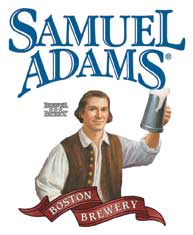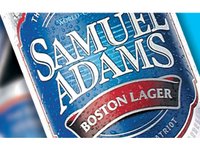Post Updated: The meet-the-brewer event at the Guild is next Wednesday, the 25th, not yesterday.I didn't know if we'd ever see the sun return to Oregon, but the summer beers were a sure bet. (It looks like they may have encouraged old man sunshine to peek in on the Beaver State, too.) In what I regard as a very positive development, it seems that wheat is becoming a more prominent player in breweries' summer repertoire. Two breweries have wits out, Upright and Redhook, and Coalition just released a fantastic American wheat.
Let's start with the wits. The style is surely one of the most surprising success stories in American brewing. A fully extinct style until it was resurrected by Pierre Celis in the 1960s, it seemed doomed to never be embraced in the US--too odd, too upsetting to our expectations of what "beer" should taste like. Anyway, that was my theory until Blue Moon, acquired by Coors, went on to become one of the country's best-selling craft (or if you prefer, craft-esque) beers.
As its brewed in the US, wit is a fairly variable style. In the hands of Allagash, it is an aristocratic, austere beer--quite dry and tilted toward sharper rind-like notes. With Blue Moon, you get an essentially pleasant beer, but watery, tepid, and sweet. In the hands of both Upright and Redhook, the wheat is prominent--a good decision, in my view. But Redhook has created a breadier version with more body; Upright's is lighter and crisper. Redhook uses ginger--a good call--but I find the coriander a bit heavy, which tilts it slightly to the sweet side. This is becoming a national trend in American wits--coriander-heavy and sweet--probably thanks to Blue Moon. Upright's, by contrast, has a much dialed-down spicing regime. The wheat adds a softness that flows into a tangy, mildly tart finish.
My favorite new wheat of the season comes from Coalition, Wheat the People. It's one of those rare beers that achieves the perfect harmony of its understated parts. The wheat is soft and gentle but round enough to give the beer substance. The Northern Brewer hops, which barely register on the IBU scale, are quite a nice contrast here--they bear the spicy, herbal evidence of their English parentage. It's a great session beer, and as we found out, a great food partner, too. Paired with the triple-sweet pastrami sandwich (with caramelized onions, bacon, and sweet sauce), an amazing alchemy happened. The wheat stiffened a bit and became a crisp complement to the sweeter elements in the sandwich. Coalition is in the process of putting in their side patio, and I can't think of a better way to spend a couple sunny hours than sitting in the summer warmth with a pint or three of Wheat the People.
Finally, I meant to mention that Matt Van Wyk was going to be debuting this year's vintage of Oakshire Line Dry Rye--another summer refresher--at the Guild.





 In the glass, Boston Lager looks quite a lot like a scotch. Not so much when you pour it out--then it's a rich amber with a vigorous bead. But if you, as I did, accidentally leave an inch in your glass until the head and fizz have passed and the beer has become still, you could easily mistake it for Cragganmore. (Or is it Oban I'm thinking of? Nevermind.)
In the glass, Boston Lager looks quite a lot like a scotch. Not so much when you pour it out--then it's a rich amber with a vigorous bead. But if you, as I did, accidentally leave an inch in your glass until the head and fizz have passed and the beer has become still, you could easily mistake it for Cragganmore. (Or is it Oban I'm thinking of? Nevermind.)



